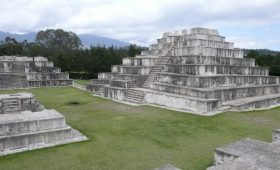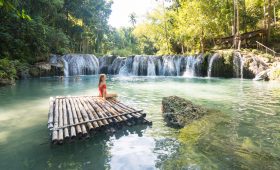About Great Inagua
Great Inagua, the second largest island in the Bahamas, offers a fascinating mix of natural beauty and historical intrigue. Located about 55 miles from the eastern tip of Cuba, this island is a haven for wildlife enthusiasts and history buffs alike. With its flat terrain and a few sand hills, Great Inagua is home to a diverse range of flora and fauna, making it a unique destination for those looking to explore beyond the typical tourist path.
What Makes Great Inagua Unique
Great Inagua is renowned for its incredible biodiversity. The island hosts a large bird sanctuary, home to more than 80,000 West Indian flamingos, the largest nesting population in the Western Hemisphere. Bird watchers can also spot species like the Bahama parrot, Inagua woodstar, and the American kestrel.
Inagua National Park, spanning over 180,000 acres, is a protected area that offers a sanctuary for various bird species and exotic plants. The park is a paradise for nature lovers seeking an up-close encounter with the wonders of the natural world.
Best Time to Visit
For the best experience, plan your visit between November and April. During these winter months, the weather is comfortably warm, with temperatures ranging from 70°F to 80°F (21°C to 27°C). This period also aligns with the flamingos’ nesting season, offering a rare opportunity to witness these magnificent birds in their natural habitat.
How to Get There
Traveling to Great Inagua is straightforward. The island is accessible via Great Inagua Airport, which offers regular flights from Nassau, the capital of the Bahamas. Alternatively, you can reach the island by boat, with ferry services available from nearby islands.
Local Transportation
Once on the island, renting a car is the most convenient way to explore. This allows you the freedom to discover Great Inagua at your own pace. Car rental services are available at the airport and in Matthew Town, the island’s main settlement.
Top Attractions
1. Inagua National Park
Inagua National Park is a must-visit for anyone interested in wildlife. Spend a day hiking through its trails, and keep an eye out for the diverse bird species that inhabit the area. Binoculars are highly recommended for birdwatching enthusiasts.
2. Matthew Town
Matthew Town, named after a 19th-century Governor of the Bahamas, is the island’s capital and only harbor. It houses the Morton Salt Company’s main facility, which is the second largest solar saline operation in North America. Explore the town’s historical sites, including the local museum, to gain insight into the island’s rich past.
3. Great Inagua Lighthouse
The Great Inagua Lighthouse is a historic landmark that has been guiding ships safely to shore for over a century. Climb to the top for panoramic views of the island and the surrounding turquoise waters.
4. Beaches
Great Inagua’s beaches offer a serene escape with their pristine sands and clear waters. Whether you’re sunbathing, swimming, or snorkeling, the island’s beaches provide a tranquil setting for relaxation. Remember to bring sunscreen to protect against the tropical sun.
Additional Insights
While Great Inagua offers a wealth of natural and historical attractions, it’s important to note that the island’s amenities are limited compared to more developed tourist destinations. The population is small, with around 913 residents as of the 2010 census, and the island’s economy is primarily driven by the salt industry. Visitors should plan accordingly and be prepared for a more rustic experience.




